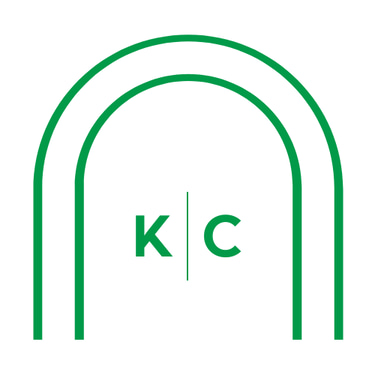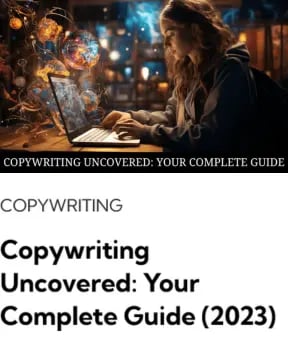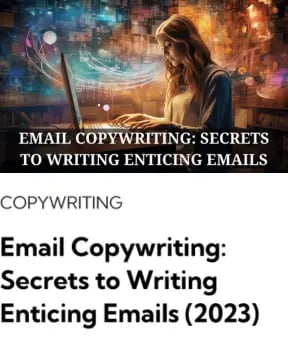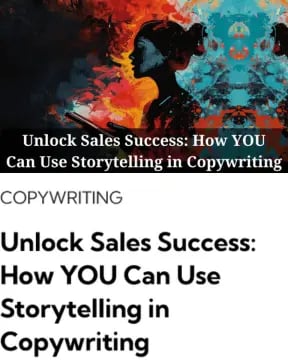7 Copywriting Strategies (Improve Your Website Sales Copy)
Use these 7 research-backed copywriting strategies to improve the sales copy on your website and close more deals.
COPYWRITING
Shane is the founder of Keystone Copywriting.
He's been copywriting, creating content and strategising in SEO for over six years.
The Keystone Copywriting Blog is his outlet for sharing his evolving knowledge.
Author
Shane Curry




Tired of your website sales copy not hitting the mark?
You're not alone.
Many struggle to make their writing engaging and effective at selling.
This article will give you seven copywriting strategies backed by research to improve your website sales copy.
Revamp your website copy and drive sales.
1. Research Your Audience
Before you start copywriting, know who you're writing for. Researching your audience helps you tailor your website sales copy to their needs.
Understand Demographics, Preferences, and Pain Points
Steps:
1. Demographics: Gather basic information like age, gender, and location. Use tools like Google Analytics to check this data.
2. Preferences: Find out what type of content they like. Check out social media trends and forums.
3. Pain Points: Understand the problems your audience faces. Look at customer reviews and feedback.
Use Surveys, Interviews, and Analytics to Gather Data
Collecting data from your audience is crucial. Surveys, interviews, and analytics are your best friends here.
You can create a simple survey and send it to existing and past customers. If you have a sales team, speaking to them is a great way to get customer insights.
Steps:
1. Surveys: Create surveys using tools like SurveyMonkey. Ask questions about their challenges and what they seek in content.
2. Interviews: Conduct interviews with a few members of your target audience or sales team. This provides deeper insights.
3. Analytics: Use website analytics to see what content performs best. Look at metrics like page views, time on page, and bounce rate.
2. Craft a Compelling Headline
Your headline is the first thing people see. Make it strong and engaging.
Use Numbers, Questions, or Power Words
Steps:
1. Numbers: Use numbers to create a sense of structure. For example, "5 Ways Company X Benefits you."
2. Questions: Ask a question to pique curiosity. For example, "Are You Getting Leads But Not Closing Deals?"
3. Power Words: Use words like “because” to drive action.
Because giving people a reason to do something increases the chances they’ll act.
The 1977 copy machine study by psychologist Ellen Langer proved this point.
The experiment participants aimed to cut in line at the photocopying machine.
A researcher would approach the machine and try to cut the line.
They’d ask one of three set questions:
1. “Excuse me, I have five pages. May I use the Xerox machine?”
2. “Excuse me, I have five pages. May I use the Xerox machine, because I’m in a rush.”
3. “Excuse me, I have five pages. May I use the Xerox machine, because I have to make copies?”
The first question is a request, the second offers a real reason for cutting the line, and the third gives a dodgy reason.
The results?
Question 1: 60% of people let the researcher skip the line.
Question 2: 94% of people let the researcher skip the line.
Question 3: 93% of people let the researcher skip the line.
Offering a reason, even if it’s dodgy, greatly increases the chances of getting a YES.
Don’t be afraid to outline the reasons people should use your products.
Because it could make the difference between converting a customer, or not.
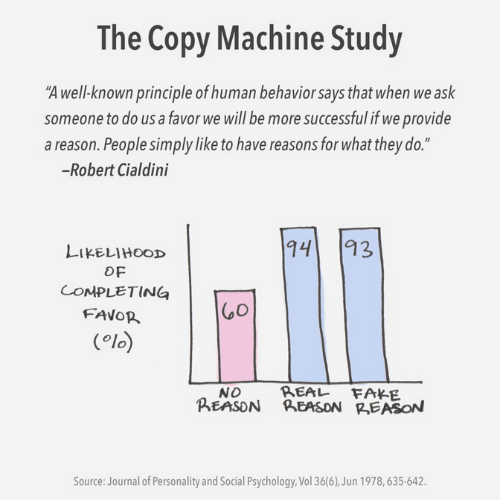

A/B Test Different Headlines for Effectiveness
Testing different headlines can show what works best for your audience.
Steps:
1. Create Variants: Come up with a few different headlines for the same content.
2. A/B Test: Use A/B testing tools like Optimizely to see which headline performs better.
3. Analyse: Check the results. Choose the headline with the highest click-through rate.
3. Use Clear and Concise Language
Clear and simple language is key to engaging your readers and persuading them to act.
Avoid Jargon and Complex Sentences
Steps:
1. Avoid Jargon: Don't use industry-specific or technical terms your audience might not understand.
2. Short Sentences: Keep sentences short and to the point. This makes your website sales copy easier to read.
3. Simple Words: Use everyday language. Replace complex words with simpler alternatives.
Make Your Sales Copy Easy to Read
Making your website sales copy easy to read helps you communicate your offer.
A clear offer has a better chance of closing sales. Because people know what they’re getting.
Steps:
1. Edit Ruthlessly: After writing, go back and shorten long sentences. Remove unnecessary words like “that” or “actually.”
2. Read Aloud: Read your content out loud. This helps you catch awkward phrases and complex sentences.
3. Use Tools: Use tools like Hemingway App to check the readability of your content.
4. Outline the Problem
Show your audience you understand the problems they’re facing. You’ve done the audience research, so demonstrate you know your stuff.
Highlight the Main Pain Points
Outline your audience's pain points in your website sales copy. Use empathetic and relatable language and show a deep understanding of their struggles.
For example:
Which one is more empathetic and relatable?
"Lose weight without feeling hungry all the time."
OR...
"Optimise your macronutrient intake and prioritise protein for healthy weight loss."
The first one wins every day.
5. Promise a Solution
Clearly state how your product solves the problem.
Make it clear how your product addresses their pain points. Be direct.
For instance: "Our software reduces data entry time by 50%."
Use Benefit-Driven Language
Focus on the benefits, not just the features.
Instead of…
"Our software has automated data entry."
Say…
"Automate your data entry - spend the extra hours with your family each week."
Notice how this highlights the feature and a corresponding benefit. It gives the audience a reason to care.
6. Prove it Works
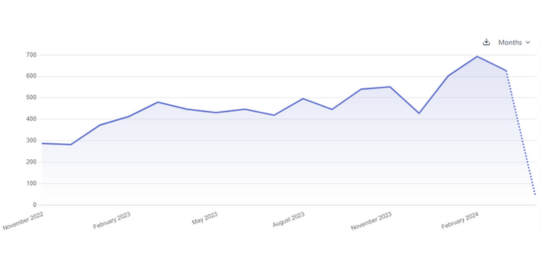

Include testimonials, case studies, and relevant data.
Show proof that your solution works. Use testimonials from satisfied clients.
"Keystone Copywriting helped us increase website traffic by 300% and double customer signups."
Include case studies that detail the success stories. Use solid data to back up your claims.
Use Visuals Like Graphs and Charts
Visuals can make data easier to digest. Include graphs that show your service's impact.
Like how this one shows conversions doubling for our client.
7. Prompt Action
Use strong calls to action (CTAs) throughout your website sales copy.
Your CTA should be clear and compelling.
Use "Start Your Free Trial Today" instead of "Learn More." Make it easy for the reader to know what to do next.
Create a Sense of Urgency or Exclusivity
Encourage immediate action. Use phrases like "Limited Time Offer" or "Join Our Exclusive Beta Program."
This motivates readers to act quickly.
Of course, only use CTAs like these if it’s true. You don’t want to lie and use fake urgency or exclusivity.
I see some people doing this on social media. It’s embarrassing and does more harm than good.
Too busy to implement these copywriting tips?
Our free homepage copy audit can help.
We check your copy and make suggestions to maximise conversions.
